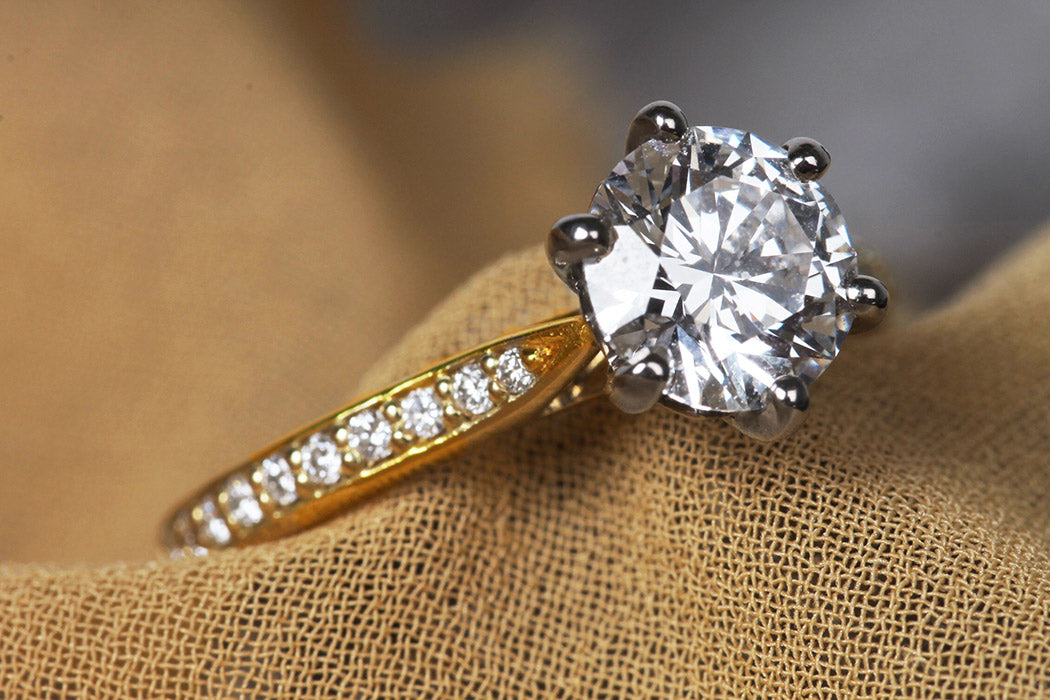Table of Contents
1. Introduction
Welcome to the era of lab grown diamond rings with claws! As more people embrace sustainable and ethical choices, lab grown diamonds have emerged as a popular alternative to mined diamonds. But what exactly are lab grown diamonds, and how do they fit into the world of dazzling jewelry? In this article, we’ll delve into the fascinating realm of lab-grown diamond rings, focusing particularly on the significance of claws in these exquisite pieces.
2. Understanding Lab Grown Diamonds
2.1 What Are Lab Grown Diamonds?
Lab grown diamonds, also known as synthetic diamonds or cultured diamonds, are created in controlled environments that simulate the natural conditions under which diamonds form in the Earth’s mantle. These diamonds exhibit the same chemical, physical, and optical properties as mined diamonds but are ethically and sustainably produced.
2.2 Benefits of Lab-Grown Diamonds
Lab-grown diamonds offer several advantages over their mined counterparts. They are more environmentally friendly, as their production does not involve harmful mining practices. Additionally, mined diamonds are not rare, they are typically more affordable, making them accessible to a broader range of consumers.
3. The Significance of Claws in Diamond Rings
3.1 What Are Diamond Ring Claws?
Diamond ring claws, also known as prongs, are the small metal projections that hold the diamond securely in place on the ring’s setting. These claws not only provide structural support but also play a crucial role in showcasing the beauty of the diamond by allowing maximum light to enter and interact with the stone.
3.2 Functionality of Claws
Claws serve both functional and aesthetic purposes. Functionally, they hold the diamond firmly in place, preventing it from becoming loose or falling out. Aesthetically, the design of the claws can enhance the overall look of the ring, adding a touch of elegance and sophistication.
4. Lab-Grown Diamond Rings with Claws
4.1 Advantages of Using Lab-Grown Diamonds in Rings
When it comes to creating diamond rings with claws, lab-grown diamonds offer unique advantages. Apart from their ethical and environmental benefits, lab-grown diamonds are virtually indistinguishable from mined diamonds, ensuring that your ring dazzles with brilliance and sparkle.
4.2 Different Claw Settings
There are various claw settings to choose from, each offering a distinct aesthetic appeal. Common settings include prong, bezel, and tension settings, each with its own unique characteristics and benefits. Depending on your preference and style, you can select the perfect claw setting to complement your lab-grown diamond ring.
5. Tips for Choosing Lab-Grown Diamond Rings with Claws
5.1 Assessing Quality
When selecting a lab-grown diamond ring with claws, it’s essential to assess the quality of both the diamond and the setting. Look for diamonds with excellent cut, clarity, and color, and ensure that the claws are sturdy and well-crafted to provide adequate support and security.
5.2 Choosing the Right Claw Setting
Consider your lifestyle and personal style preferences when choosing the right claw setting for your lab-grown diamond ring. Whether you prefer a classic prong setting or a modern bezel setting, make sure it complements the overall design of the ring and enhances the beauty of the diamond.
6. Customization Options
6.1 Personalizing Your Ring
One of the benefits of lab diamonds with claws is the ability to customize and personalize your ring according to your unique preferences. From selecting the diamond shape and size to choosing the metal and claw design, you can create a one-of-a-kind piece that reflects your individuality and style.
6.2 Tailoring the Claw Design
Claw designs can vary in style and intricacy, allowing you to tailor the look of your ring to suit your taste. Whether you prefer a traditional claw design or a more intricate and contemporary style, work with a skilled jeweler to bring your vision to life and create a ring that is truly yours.
7. Maintenance and Care
7.1 Cleaning Your Lab-Grown Diamond Ring
Proper maintenance and care are essential to ensure the longevity and beauty of your lab-grown diamond ring with claws. Regular cleaning using mild soap and warm water, along with occasional professional cleanings, can help keep your ring looking its best.
7.2 Maintaining Claw Integrity
Inspect your ring regularly to ensure that the claws are secure and intact. If you notice any signs of wear or damage, such as bent or loose claws, it’s essential to have them repaired promptly to prevent the risk of losing the diamond.
8. Ethical and Environmental Considerations
8.1 Sustainability of Lab-Grown Diamonds
Choosing a lab-grown diamond ring with claws aligns with ethical and environmental values, as it supports sustainable and responsible practices in the jewelry industry. By opting for lab-grown diamonds, you can enjoy the beauty of diamonds without contributing to environmental degradation or unethical labor practices.
8.2 Ethical Sourcing
Many consumers are increasingly concerned about the ethical sourcing of the materials used in their jewelry. Lab-grown diamonds offer transparency and peace of mind, as they are produced in controlled environments without the ethical concerns associated with mined diamonds.
9. Conclusion
Lab-grown diamond rings with claws offer a sustainable, ethical, and beautiful alternative to traditional diamond jewelry. By combining the brilliance of lab-grown diamonds with the elegance of claw settings, these rings allow you to express your individual style while making a positive impact on the planet.

